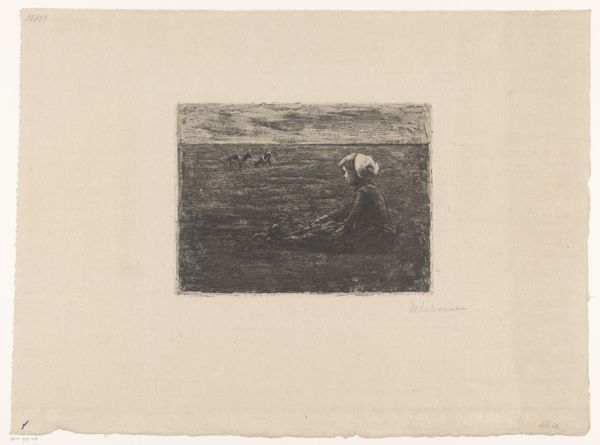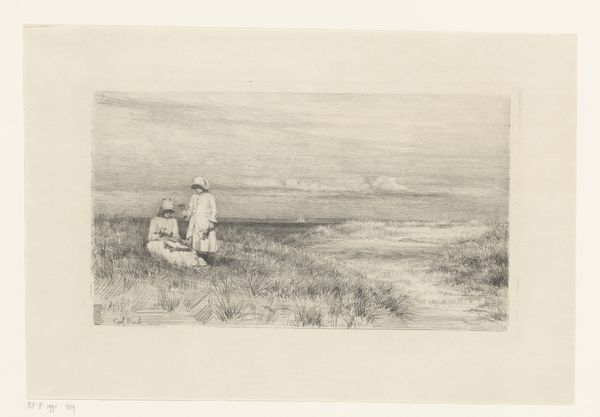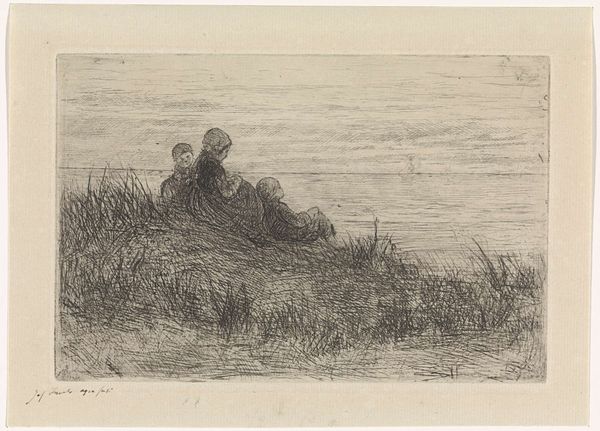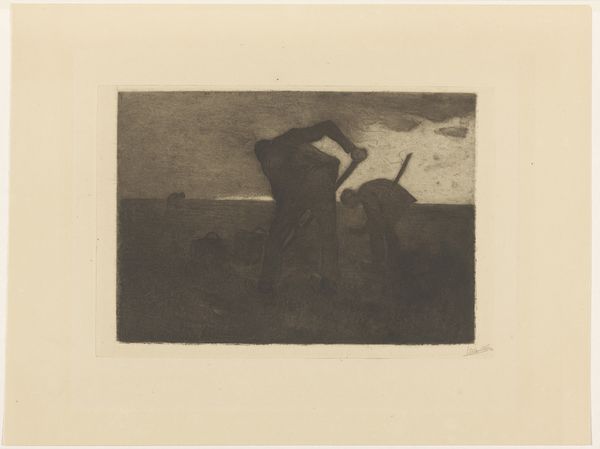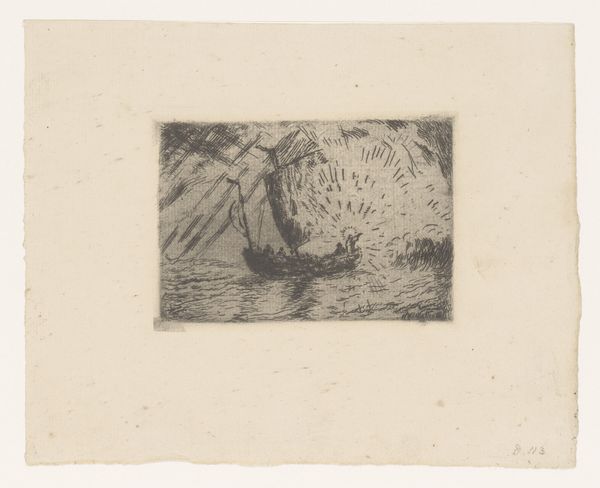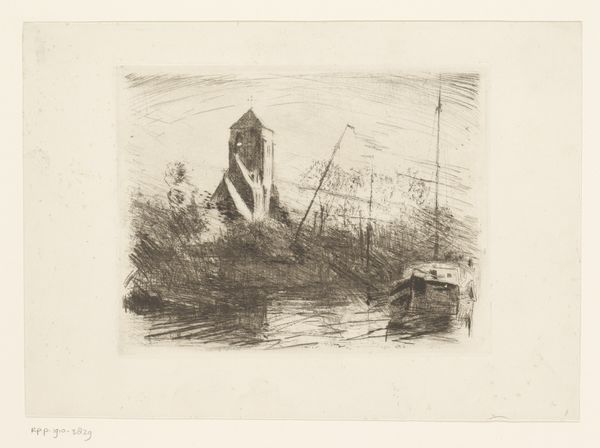
Copyright: CC0 1.0
Curator: Liebermann's "Ziegenhirten," housed here at Harvard, presents us with a seemingly simple pastoral scene. There is a child in the foreground and some goats in the distance. Editor: My first impression is of starkness and isolation. The limited tonal range and the vast, empty landscape really emphasize the figure's solitude. Curator: Yes, but let's think about the symbolic weight of the shepherdess. Throughout art history, the shepherd figure embodies innocence, a connection to nature, and a certain timelessness. Editor: But who gets to be timeless? Consider the historical context. Liebermann, as a Jewish artist in a rapidly changing Germany, was perhaps using this imagery to evoke a longing for a simpler past, even as industrialization and antisemitism threatened that very notion. Curator: That's a compelling reading. The image then becomes a meditation on loss and memory. Editor: Precisely. Seeing the pastoral ideal through the lens of political and social realities makes this piece even more interesting to me. Curator: It certainly gives the piece added depth. Editor: A good reminder that what appears timeless is always historically contingent.
Comments
No comments
Be the first to comment and join the conversation on the ultimate creative platform.
